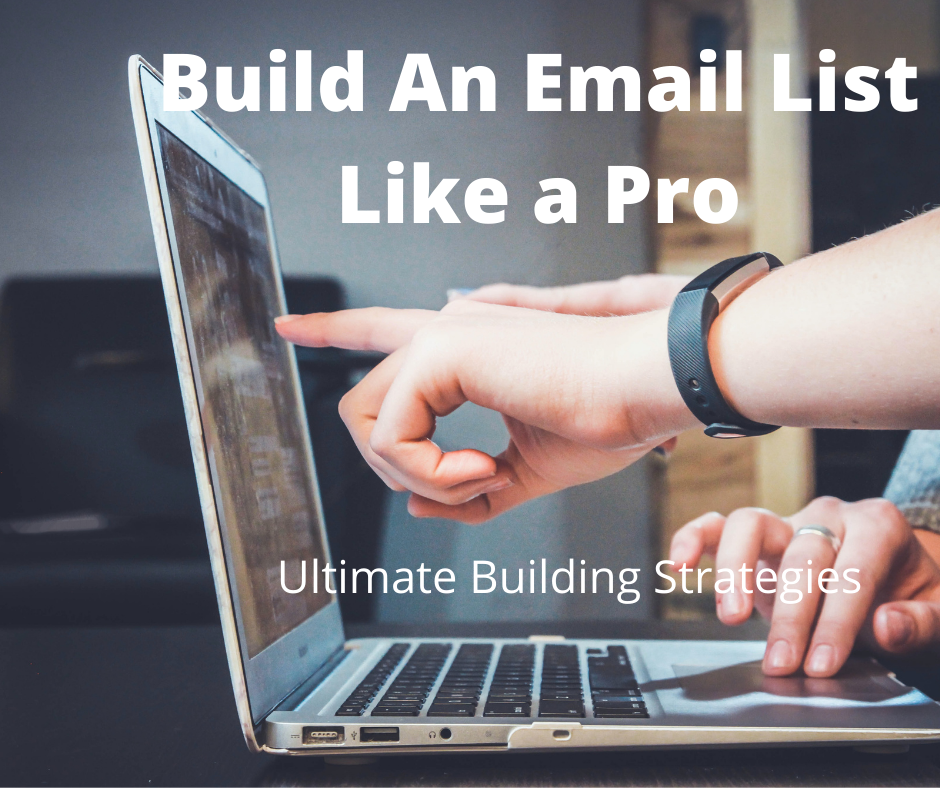Table of Contents
How to Build an Email List Like a Pro in 2022: Ultimate Building Strategies
You’ve probably heard the importance of building an email list as an entrepreneur. The crazy thing is this can be hard to do if you don’t know how to get started and take action. From finding your niche audience to sending out your first email campaign, there are many steps involved in building an email list like a pro in 2022. This guide will walk you through each step so that you can master the art of email list building strategies like the best of them.
Start From Scratch

When you’re first starting out, getting visitors can be hard. In order to get more subscribers for your email list, there are two things you should always do: 1) ask people if they want your emails; and 2) give people something when they sign up. You can do these things by building an opt-in form on your site and by offering a valuable lead magnet (like a PDF checklist). Once you have those set up, it’s time to start promoting your list.
Choose the Right Topic
For starters, it’s important to find a topic your audience cares about. If they’re not interested, they won’t stick around long enough for you to make that much of an impact. Use Google Keyword Planner and other tools (like Moz and Facebook) to research search volume on topics related to your business. It might help you discover some keywords that aren’t getting as much attention as they should! Then spend time creating content specifically geared toward those keywords. Keep track of how many people are landing on your page after searching with these related terms, too; it might be easier than trying something completely new!
Read also The Ultimate Guide to Using Live Chat Software for The Whole Customer Journey
Know Your Audience

Who are you creating content for? Knowing who your ideal audience is will help you decide what kind of content they’d be interested in. Is it specific pieces of information or long-form articles? Is it serious or satirical? The key is knowing what kinds of information people want and how to deliver it. Your audience might be made up of CEOs, small business owners, college students, teachers, stay-at-home moms – every audience has different needs! Find out what those needs are and cater to them. A good way to begin is by looking at top blogs that target your exact niche; their content calendars will give you a good idea of when people publish on their sites. Take inspiration from that!
Start Conversations with Personalized Welcome Emails
Starting off conversations with your email list is critical, especially when you’re just getting started. As soon as someone opts-in, send them a personalized welcome email and thank them for signing up. Make sure that every subscriber gets a welcome message from you personally and let them know why they are receiving emails from you in the first place. This will build rapport and show your audience that you care about their personal preferences. Keep it short but sweet; remember that people can unsubscribe anytime, so try not to make them feel overwhelmed or annoyed by too many promotional emails or information overload on day one. Welcome messages should be personable, friendly and authentic!
Build Relationships through Gated Content

Gated content is one of many ways you can use to build relationships with your prospects, even if they aren’t ready for a sales conversation. Research shows that these people are two-and-half times more likely to buy from you than your non-gated leads. When it comes time for them to make a purchase, they already know who you are and what you do. But more importantly, they know why they should choose you over everyone else. Gated content can help secure your position as a leader in your industry by showing prospects what makes you different from every other vendor out there. Keep reading for details on how gated content has proven effective at building trust with clients through case studies and examples of successful gated content campaigns .
Create Compelling Landing Pages That Convert
It’s important to your overall email marketing strategy that you design landing pages that capture leads and convert visitors into subscribers. When it comes to building landing pages, there are many options available. You could create them yourself, pay for them on a platform like Leadpages or Unbounce or hire someone else to do it for you through a service like Upwork. What’s key is choosing your option wisely, because each approach has its pros and cons. For example, creating landing pages yourself requires some expertise but can be cost-effective; using an existing platform is convenient but can feel impersonal; hiring an expert requires money upfront but can be professional and friendly; outsourcing tasks via Upwork will get you high-quality results at reasonable prices.
Read also The Ultimate Guide to Using Live Chat Software for The Whole Customer Journey
Use Online Ads to Improve Lead Generation

Online advertising is quickly becoming one of, if not THE best way for small businesses and startups to get new customers. One of my favorite things about online advertising is how targeted it can be. For example, you can advertise to people who have already visited your website—or even those who have filled out your lead capture form! If someone likes what they see on your landing page, or decides that they want your service after filling out a form (which means they’re at least interested in what you’re offering), then online ads are an easy way to convert that interest into leads—and hopefully future customers.
Get Out of Your Own Way
Nobody wants to become a spammer, sending people emails incessantly. But with their permission, of course! If you want your site’s visitors to sign up for your email list and read more of your content, you have to get out of their way as much as possible. Make sure your signup form is clearly visible and easy to find, that it’s not buried at some obscure spot on your page, and that it offers benefits rather than selling subscribers on why they should sign up. Whatever else you do, don’t annoy them with too many pop-ups or ask too frequently for updates. You’re better off having no mailing list than alienating them with unwelcome messages. Treat everyone who enters your email list like gold!
Set Aside Time To Connect With Readers Through Your Newsletter

One of your top responsibilities as a blogger is engaging with your audience. Your newsletter, which you can send out on whatever schedule is convenient for you, makes that job easier. Start by sharing one thing per week, like an update about your business or something you learned that week that could be useful to readers. You can also share behind-the-scenes peeks into projects you’re working on or upcoming events at your business. If there’s ever anything personal going on in your life that might affect what you write, feel free to share that too—your readers want to know they’re connected with real people, not just brands.
Have a call to action for each landing page
Your landing page should have one primary call-to-action button. This is your chance to hook your visitors, so make it count. You can also try using an eye-catching image that combines text and calls-to-action, or a callout box or tool tip. It’s also worth adding a preheader and (optionally) secondary CTA buttons above your main form (but below your eye-catching image), as you’ll usually want to capture at least some of your visitors before they even reach your form. See our guide on optimizing calls-to-action for more tips! Note that if you’re using heat mapping software like CrazyEgg or HotJar, testing all these options will slow down how quickly you can see which ones are most effective!
Come up with a timely pop-up survey

Before creating or improving your email list, ask yourself these questions: Do I have a clear goal for my email list? Are my emails direct and professional, but also friendly and welcoming? What kinds of topics or products will I be sharing via email, and how often will I send out emails to subscribers? Once you’ve answered these questions (or at least come up with a plan), it’s time to get building. One of the simplest ways is with a pop-up survey. Here’s how they work. First, create several variations of your survey that correspond with different trigger events—in other words, different ways subscribers might interact with your campaign.
Use Creative signup forms
You might have heard it before, but we’re going to say it again because it’s that important. While signup forms are not usually what is going to keep you from building your list (especially when it comes down to generating leads for your product), they can still make a big difference between those who subscribe and those who don’t. Try integrating something fun like share my cat video or I’m hungry, order me some fried chicken rather than just offering boring opt-ins. The more creative you get with your form design, text and calls-to-action, the more people will want to share their contact information with you. After all, sharing = social proof. And social proof = getting new subscribers!
Introduce Giveaways and gamification

Start thinking about how you can start using giveaways and gamification methods like points and badges. This will help you start building more excitement around your email list right away, as well as keeping your subscribers engaged with your brand (instead of having them leave once they’ve got what they want). You’ll want to keep offering these up regularly and incorporating fun new elements into them (like quizzes) so you don’t get stale. Yes, I know that might sound like shameless self-promotion but it really works. More importantly, think about your audience and how you can better serve them by introducing unique promotions or rewards for loyal customers. If it helps people stay engaged with your brand, give it a try!
Incorporate lead magnets into your site
Lead magnets are content assets that you give away for free in exchange for contact information. Think of it as bartering. You get someone’s contact information, which is worth money, and they get your piece of content, which might be worth something to them but isn’t quite valuable enough for them to pay for it. The key is understanding exactly what kind of lead magnet you want people to download from your site—and whether or not that lead magnet will ultimately bring you sales down the line. For example, if you’re selling kitchen knives online, a great lead magnet might be a free guide on how to select good knives. That way, when people come back to buy more kitchen supplies later on, they’ll already have established trust with your brand.
Have Great content

Good content is key, but it isn’t everything. Creating quality content that resonates with your audience is hard enough already—and then you have to promote it so people can see it. If you’re just starting out, try promoting your new posts on social media and with targeted ads. Once your list is big enough and you have some momentum going, we recommend using MailChimp or Constant Contact (our go-to email marketing providers) because they make it easy for beginners to build a mailing list while learning best practices as they grow their business. There are also great WordPress plugins that allow you to set up opt-in forms on your website without having to learn any code. The best one we’ve found is SumoMe. It has several different options for building lists, including popups and slide-ins, which are both effective ways of getting more subscribers into your database. But what really makes SumoMe stand out from other plugins is its ability to track conversions based on where visitors come from. That way, if someone subscribes via Facebook but doesn’t convert at all when they land on your site, you’ll know not to spend money advertising there again!
What Now!
Content is king, and that rings true when you’re growing your email list. But how do you know what kind of content will attract potential subscribers? It all comes down to building relationships and developing trust. If you’re producing valuable content, people will be excited about what you have to say! In addition, offering value through valuable information is more likely to grow your email list than any other strategy. So before you set out on growing your email list, ask yourself: What can I provide for my audience that they might not get anywhere else? Then, do it!
Read also The Ultimate Guide to Using Live Chat Software for The Whole Customer Journey

